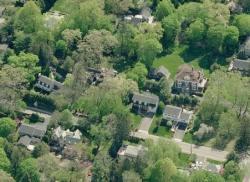Preservation Hangs in the Balance in Scarsdale
- Details
- Written by Joanne Wallenstein
- Hits: 6929
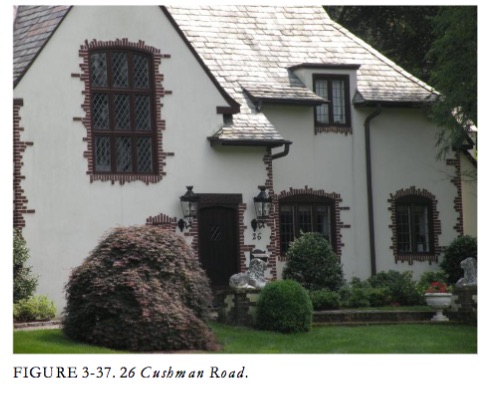 When all the members of the Committee for Historic Preservation resigned from the committee in November, 2017 saying that the current Village code did not allow them to prevent the demolition of any homes, we were surprised and hopeful. We were surprised because in our memory an entire committee had never made such a statement, and hopeful because we thought that this would compel the Village Board of Trustees to make some meaningful changes to the code. In fact, former members of the committee suggested some changes that would align with the historic preservation code in nearby towns and make it possible to save some of the historic homes in Scarsdale that are being razed at an alarming rate.
When all the members of the Committee for Historic Preservation resigned from the committee in November, 2017 saying that the current Village code did not allow them to prevent the demolition of any homes, we were surprised and hopeful. We were surprised because in our memory an entire committee had never made such a statement, and hopeful because we thought that this would compel the Village Board of Trustees to make some meaningful changes to the code. In fact, former members of the committee suggested some changes that would align with the historic preservation code in nearby towns and make it possible to save some of the historic homes in Scarsdale that are being razed at an alarming rate.
However, we're not sure what if any changes will be made at all.
The Village Board of Trustees has replaced all of the committee members, and the new committee chair, Lucas Meyer was quoted in the Scarsdale Inquirer saying that he believes that only "15 structures in the Village need to be preserved for posterity." Could this mean that almost all applications for demolition filed will be approved? We wondered if this was Meyer's personal point of view or a new standard for the committee? Either way, this interpretation of the code does not even align with the current village code. If the CHP simply approves all demolition applications, no one will need to appeal a decision to the Board of Trustees and the homes will be lost without any consideration.
We were also surprised that local architect Bana Choura was reassigned to the committee. She previously resigned after a conflict of interest as she works on designing the homes that are built on the properties where applications for teardowns are filed. Why couldn't the trustees find someone who has not previously had to step down from the committee... and someone from outside the Village?
We also wondered if the trustees would consider the recommendations from the prior members of the CHP for changes to Village Code that would allow at least some of our homes to be preserved.
And what about the Cultural Resource Survey Report of all of Scarsdale's properties done by architectural historian Andrew S. Dolkart and Li-Saltzman Architects in 2012? The study surveyed the "architectural fabric in order to identify buildings and areas of particular architectural or historical significance." They identified a list of the most significant individual buildings "ranging from colonial-era farmhouses, to mid-nineteenth century rural villas, to architecturally distinguished suburban homes from the early decades of the twentieth-century , to exceptional mid-century Modern houses. The report says, "We realized that what is so special about Scarsdale is the cohesive nature of the built fabric. While we continued to look at each building individually , we also looked to groups of buildings that give a distinctive character to the village. Thus, the survey has identified twelve "Study Areas," where groups of buildings of high quality and with architectural integrity relating to their original design, create cohesive neighborhood ensembles "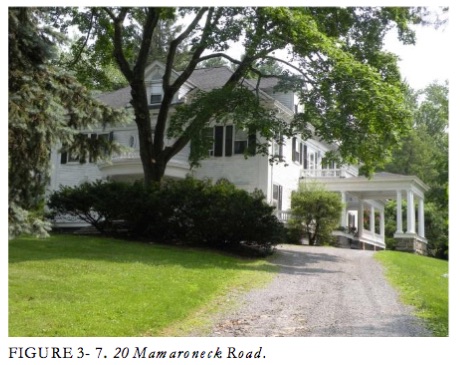
The report suggests both individual properties as well as historic districts for preservation. Would the trustees consider ways to recognize those properties and districts and incentivize preservation of the facades?
We wrote to the Mayor and several Village trustees with our questions and here is a response from Mayor Dan Hochvert:
1: Regarding the appointment of new committee members:
After the Village Board and Staff learned of resignations of the previous Committee for Historic Preservation (CHP), they recognized there were 3 applications for Certificates of Appropriateness scheduled for hearing on 12/26. A concern was that if the Village was not able to abide by its Code which requires hearings for such applications by the CHP to determine if the applicants' properties were historic, the applicants might seek judicial approval for demolition of the property. To prevent that outcome, volunteers who had previously served on the CHP were asked if they would temporarily serve while longer term volunteers were sought. The resultant CHP consists of some members with previous CHP experience and some members who have interest in historic properties.
2. Regarding the Chairman's view that only 15 properties in Scarsdale warrant preservation:
It is important to note that the Code gives each member of the CHP one vote and requires a minimum of four votes for a decision. New York State law also requires that if fewer than four members of the CHP vote either for or against the application for a C of A, it will be deemed a default denial and the applicant may appeal to the Village Board.
3. Regarding proposed changes to the preservation code:
The Village Board received recommendations from the members of the previous CHP and will schedule public discussion of them as soon as possible in the face of a busy budget development schedule.
(Photos are taken from the 2012 Cultural Resources Survey by Li-Saltzman Architects.)
Trustees Ponder Revisions to Sanitation Pick-Up and Recycling Program as well as LED Streetlights
- Details
- Written by Laura Halligan
- Hits: 6248
 The Scarsdale Board of Trustees kicked off a busy evening this past Tuesday by hearing recommendations on how the village can further its conservation efforts and save money in the process. Specifically, the Scarsdale Sustainability and Municipal Services Committees reviewed proposals on modifications to Scarsdale's sanitation and recycling operations and LED street lighting.
The Scarsdale Board of Trustees kicked off a busy evening this past Tuesday by hearing recommendations on how the village can further its conservation efforts and save money in the process. Specifically, the Scarsdale Sustainability and Municipal Services Committees reviewed proposals on modifications to Scarsdale's sanitation and recycling operations and LED street lighting.
Sanitation Operations Study/Increasing Recycling
The Scarsdale Conservation Advisory Council (CAC) presented an in depth "Sanitation Study," which identified service and operations improvements, and ways to increase recycling while reducing trash.
The analysis shows that Scarsdale already boasts one of the highest levels of sanitation services and recycling rates in Westchester County. In 2016, our residents generated just over 19,000 tons of waste and 65 percent of it was recycled. However, the recycling rate was, and continues to be, driven by the village's high percentage of yard waste, rather than commingled or paper recyclables. In addressing Scarsdale's Municipal Services Committee, CAC Chairman Ron Schulhof reported, "We're doing an amazing job... but we want our recycling rate to be higher and we looked for areas that we could improve."
While we may be doing an amazing job, it isn't easy. Commingled and paper recyclables are picked up every other week; residents have trouble storing two-weeks worth of recyclables and end up throwing some in the trash; and, many cannot get to the recycling center to dispose of food scraps. As a result, Scarsdale still disposes of approximately 6,600 tons of trash each year (40 pounds per household each week), which is incinerated at a cost of $28 per ton. So, addressing items that are recyclable or can be donated will continue the village's efforts to reduce total trash, improve the environment and reduce cost.
Based on its research and close collaboration with the Scarsdale Sanitation Department, and to expand recycling efforts, the CAC recommended three additions to sanitation services:
• Increase the frequency of commingled and paper recycling pickup to once per week;
• Launch weekly curbside pickup of food scraps for recycling; and
• Site a furniture donation container at the Scarsdale Recycling Center.
The committee believes these services will make it easier for residents to recycle, reduce the amount of space they need to store recyclables, and offer more recycling options, while providing the village with significant savings.
However, to implement these additional services and avoid large costs, two changes are required:
• Commingled recycling pick up will move to the curb (as paper recycling is now); and,
• Pickups that fall on a holiday will not be rescheduled during that week.
The CAC also recommends trash, yard waste or leaf collection service remain the same.
While the estimated cost of the proposed changes is projected to be between $13,000 and $26,000, it is expected that, by reducing trash, the village will reduce its disposal fees. In addition, the committee advises a capital investment of $3,500 to add a furniture donation container, through a partnership with Furniture Warehouse, a local nonprofit.
In addressing the proposed changes, Schulhof outlined a number of benefits. "Recycling weekly will alleviate residents' storage and it's going to reduce the amount of handling. at the metrics, comparable communities that pick up weekly have higher recycling rates." With regard to food scraps, Schulhof stated, "We know that while the drop off site has been successful, not all residents can participate at the drop off site. Picking up (food scraps) will open this program, in practical terms, to a much higher percentage of residents." About furniture donation, Schulhof explained, "When you donate furniture now, you have to drive it some distance or wait for a truck to pick it up. By having a drop off site here, not just for large pieces but for an end table or mirror, you provide convenience for residents and support those in need."
Superintendent Salanitro said, "The information in this report is extremely accurate and we can support the CAC's recommendations through our existing operations. The more methods we implement to increase recycling, the better." He also indicated that less trash will translate into lower disposal fees for the village. "I think that we'll see a drastic decrease in our overall weights through increased food scrap recycling and reuse of furniture." He continued, "That's where the weight is. The metrics work in our favor when we reduce municipal solid waste components. "
While the trustees were impressed with the committee's report and recommendations, there were concerns about residents' reactions to service changes. Trustee Carl Finger mentioned, "When the public learns that we're considering these recommendations, I think it's important that we get some feedback." He went on, "I'm a little concerned about ... people saying 'I like my services. I don't want any change to my services.'" Trustee Deborah Pekarek, while supportive of the CAC's recommendations, agreed with Finger, "The need for some kind of public discussion is real. Although we're giving a lot, we are taking something."
Trustee Seth Ross supported the recommendations, stating, "It appears that the cost is slight and that the risk is very small. Any of the measures being taken can be modified or reversed if the program isn't working as planned. These are major factors in helping the board to support this proposal."
Mayor Dan Hochvert, also in favor of the recommendations, congratulated the CAC and village staff on its work, stating, "The best thing about this report is that it is the closest collaboration between an advisory council and staff. It's a great report."
Bob Harrison of Fox Meadow Road, said, " Being in my 70s, (this) is not an improvement in service, it's a reduction. I've now got to lug recyclables out to the street, when, today, the sanitation person comes down my driveway. I support recycling but I'm very concerned. I think you've got to hear from the entire community."
The Municipal Services Committee supported the CAC's recommendations and proposed further review by the Scarsdale Board of Trustees. It is expected that the board will request a public information session to obtain community feedback and address questions.
LED Streetlight Project
The Ad Hoc Committee on LED Streetlights presented an update on the recently concluded LED streetlight pilot, which covered both high traffic and residential roads throughout the village. The study found that LED lighting will help Scarsdale reduce energy use, lower its electric and maintenance costs and improve lighting.
The committee recommended moving forward with replacing streetlights at those locations that were tested over the past three months. New LED fixtures would be installed on "high traffic" roads: White Plains/Post Road, Mamaroneck Road, Weaver Street and Heathcote Road (between Post Road and Five Corners); and new LED bulbs would be installed on residential streets within Crane-Berkeley and Secor Farms, to preserve the current, decorative "Town and Country" fixtures.
In total, 301 streetlights would be replaced, or 15 percent of the 1,976 streetlights in Scarsdale. The committee also plans to continue research for streetlights on residential roads in preparation for a residential road pilot planned for summer 2018.
While the upfront cost of installing these fixtures is approximately $60,000, projected savings is estimated at $25,000 (resulting in a short payback period of 2.8 years). The village will be able to realize additional cost savings by using in-house personnel to install the fixtures, rather than outsourcing the work. According to Benny Salanitro, Scarsdale Superintendent of Public Works, "Installation (of pilot fixtures) was smooth and relatively straightforward. These fixtures happen to be available through a 'piggyback' program we have with Hempstead (NY), so we'll be able to purchase them quickly should we decide to move forward."
Because the village has available funds in the current year's capital budget to cover the cost of the new lighting, the Scarsdale Sustainability Committee approved the recommendations and directed staff to proceed with purchase and installation.
Laura Halligan is a Scarsdale-based writer, editor and marketing consultant. She is principal of Pinch Hit Prose and provides communications services to entrepreneurs, small businesses and nonprofits.
Efforts to Preserve Scarsdale's Tree Canopy Continue
- Details
- Written by Laura Halligan
- Hits: 6212
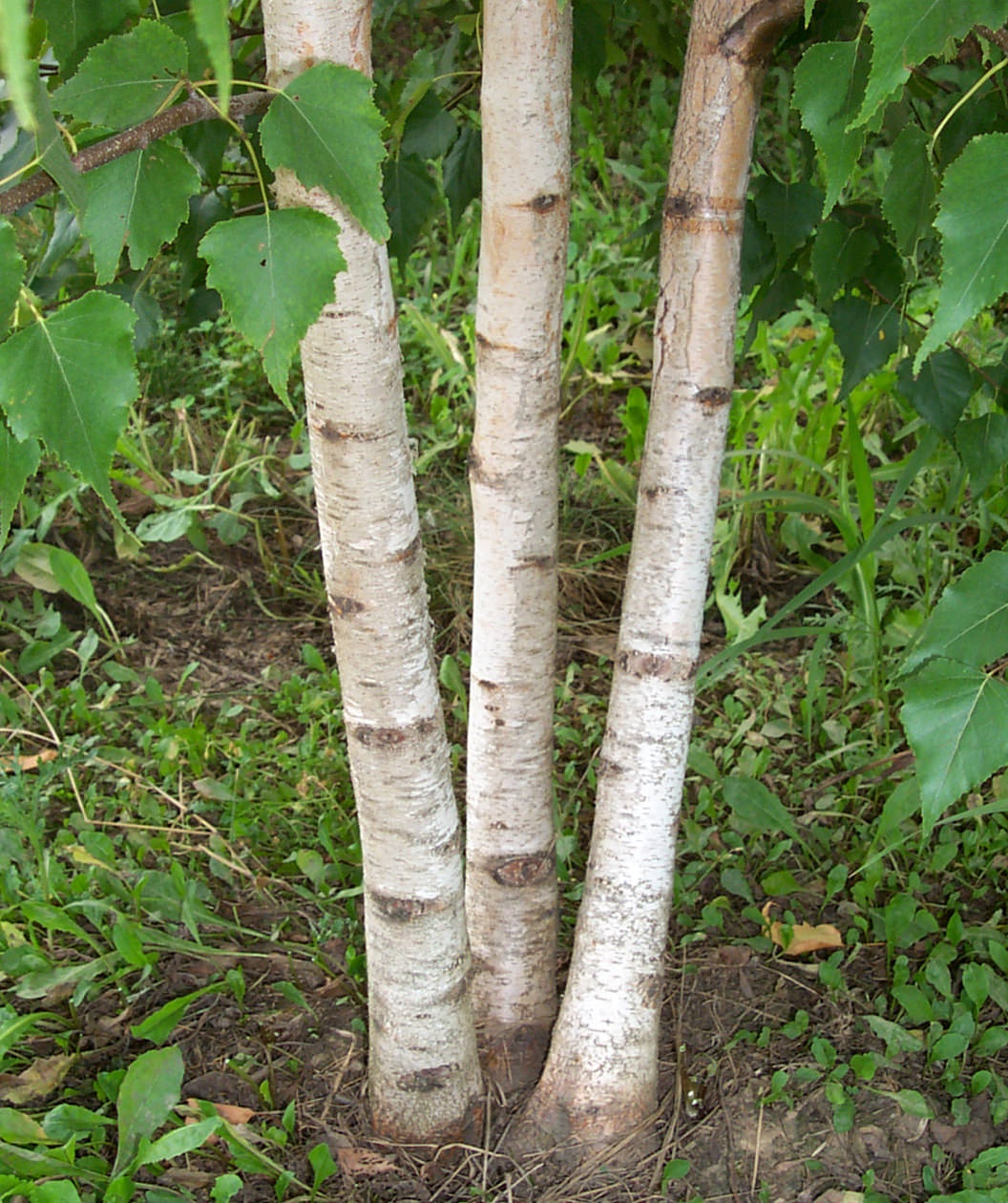 This Tuesday, in a well-attended meeting of the Law and Sustainability Committees of the Scarsdale Board of Trustees (BOT), village officials and residents continued the review and discussion of proposed revisions to the village's code on trees, grass, brush and weed.
This Tuesday, in a well-attended meeting of the Law and Sustainability Committees of the Scarsdale Board of Trustees (BOT), village officials and residents continued the review and discussion of proposed revisions to the village's code on trees, grass, brush and weed.
The Friends of the Scarsdale Parks (FOSP) and the Conservation Advisory Council (CAC), alarmed by the high rate of tree removal in the village, petitioned the BOT to preserve our "village in a park" by amending the current tree law. In turn, the village established a working group of FOSP, CAC and village staff members to clarify village tree preservation goals and develop proposed amendments to existing code.
As explained by Assistant Village Manager Ingrid Richards, the group felt any modifications to current code should clearly convey the importance of trees to Scarsdale's ecosystem, increase the number of protected trees as well as the number of replacement trees planted, and provide additional funding for the planting of trees in the village right of way and public parks.
Specific amendments include increasing the number of protected trees from three to 21 (aligning with the New York State Department of Conservation endangered list) and requiring a replacement tree for any tree measuring at least 24" in diameter at breast height (DBH) that is removed. The current code requires replacement for trees measuring at least 36" DBH. In addition, replacement trees will be required for every "aggregate" 24" of DBH removed within a 12-month period (e.g., three trees measuring 6" DBH or more). Further, a permit will be required for any tree removed that measures 6" DBH or greater; the current code requires a permit for every third tree measured 6" DBH or more. A permit also will be required for removal of six or more small caliper trees, such as hawthorn, crabapple, redbud and birch, as they are deemed important to preserve but do not reach the 6" threshold.
To provide additional funding for village tree planting, the village will charge a fee when a tree is removed, but not replaced. The fees will be placed in a tree preservation fund for plantings in village right of way and parks.
From January 1 through October 29, 2017, 741 trees were removed throughout Scarsdale. Under current law, the village required only 38 replacement trees to be planted. When taking the proposed amendments into account, the village would have required 412 replacement trees instead. (However, it is important to note that the Scarsdale Engineering Department routinely makes recommendations for more replacements, but most are not mandatory. Over the same time period, the department recommended that 238 replacement trees be planted).
As Richards presented the working group's recommendations, it became clear that the proposed code changes would have the greatest impact on developers who often remove dozens of trees for a new construction project. From January 1 through October 29, 2017, the village received applications to remove 345 trees due to new residential construction. The existing law required seven replacement trees; the proposed amendments would require 172 replacements.
Of course, individual homeowners who remove trees because they are diseased, dead or hazardous, or due to landscaping changes, new additions or renovations also will be impacted, albeit on a smaller scale. During the first 10 months of 2017, residents filed 29 applications to remove 111 trees due to landscaping changes/new landscape plans; the current code provided for seven replacement trees; the proposed amendments would provide for 55 replacements.
The presentation was followed by a spirited discussion that focused the administration of the new requirements, and the need to balance tree preservation and the rights of property owners.
Trustee Marc Samwick raised concerns about the administrative effort required to enforce the proposed revisions, and asked if there were neighboring communities with similar programs that could be researched for best practices. Village Manager Steve Pappalardo anticipated that the code revisions would account for approximately 150 hours of staff time over the course of a year and said he was confident that the new policy could be effectively managed.
Scarsdale Trustee Seth Ross questioned if other communities use a similar "aggregate" approach in requiring tree replacement. While it appears that no neighboring municipalities utilize such a plan, many have lower DBH thresholds to preserve more trees. Ron Schulof, a representative of the CAC, explained that tree preservation policies vary widely from community to community. "In the extreme, some communities have the BAR equivalent for trees. You want to take a tree down, there's a village committee that goes out and looks at the tree. When we thought about this, we considered the extremes and the middle." He continued, "Imagine a home with 10 23.5-inch trees that come down. Without aggregate, (the homeowners) don't have a single required replacement. They may replace them, but this code ensures that everyone does their part. "
Trustee Samwick also raised the possibility of increased costs for homeowners. "We have to be very cognizant that this is putting a potential financial hardship on homeowners," he said. The aggregate approach could adversely affect a homeowner who doesn't want to remove trees, but needs to do so due to disease. In addition to the removal cost, the homeowner may need to pay permit fees and assume additional costs of planting required replacement trees.
In addressing the board's questons, Lee Fischman, representing the CAC stated, "We worked with staff to make sure this was implementable and that it wasn't too great a burden for staff... that's why they feel comfortable. (Further,) proportionality is built into this. A lot of the problem we have in the village is clear-cutting; it's not individual homeowners who want to take down one or two trees because they have to... Most people won't have to deal with (excessive costs)."
The discussion continued with a number of comments for and against the proposed revisions. Resident Linda Killian was concerned about the effects of the amended ordinance on the existing tree population. "We should be concerned about tree removal, yes... but these trees are aging and we are seeing a lot of these trees coming down. Perhaps what we should be talking about is a better tree removal policy of some of these diseased trees."
Resident Bob Berg asked, "How do we know there's a problem with trees being cut down here that outweighs all the other problems that the trees actually cause in town?" He continued, "If you want to increase the tree count, why don't we focus on public parks and lands? You're intruding on private property rights here... You have to weigh the cost of having a tree canopy in an overdeveloped, densely populated area with the benefits the trees obviously provide. It's not a simple one-sided approach, which this law seems to suggest."
Resident Lisa Beck stated, "There are two very separate concerns here. There's a concern about sick trees, dangerous trees that can endanger us, but we choose to live in the suburbs and that's part of the benefit of the trees that surround us." She continued, "I think people have done a lot of work on these amendments. In my research, I've looked a number of neighboring statues and they require different things... more specific things. I do want to offer that there are other ways of doing this."
Greg Schwinn of Edgewood, was concerned about the "overreach of this law for me as a private property owner. We want to maintain our properties... leave it to us to decide what we're going to do about tree replacement. We already live in a neighborhood with trees, we appreciate them and are going to take appropriate steps. Focus the efforts on new development."
Lisa Beck concluded, "I understand your concerns, but if you continue to take 700-plus trees down each year, and replace them with less than 40, imagine what this village will look like."
Due to the questions and issues raised at the meeting, it was decided that the working group would review feedback and collect additional comments from the BOT and the public. Another meeting will be scheduled to discuss any relevant revisions to the current proposal.
SHS Girls Varsity Soccer Player Named to 2017 All State Team
- Details
- Written by Joanne Wallenstein
- Hits: 4541
 Allison Stafford, a junior at Scarsdale High School, has been named fifth team All State for Class AA by the New York State Sportswriters and Coaches Organization for Girls Sports. She's the first SHS girls soccer player to be named All State since 2011 and is one of only four Section 1 female soccer players to receive the honor in 2017.
Allison Stafford, a junior at Scarsdale High School, has been named fifth team All State for Class AA by the New York State Sportswriters and Coaches Organization for Girls Sports. She's the first SHS girls soccer player to be named All State since 2011 and is one of only four Section 1 female soccer players to receive the honor in 2017.
Class AA consists of the largest high schools in New York State and Section 1 is comprised of high schools in Westchester, Rockland, Putnam and Dutchess counties. SHS girls varsity A coach Mindy Genovese, whose team comes off the latest in a string of successful seasons stated "Allison is tenacious, competitive and intense, with a work ethic that is unmatched. While she anchored our back line last year, she stepped up in a different role this season and was extremely valuable to the success of our team."
In describing her transition in the 2017 high school season from her natural position on defense to midfielder, Stafford said "Soccer is the ultimate team sport and when my coach asked me to play a new position this year for the good of the team, I was happy to do it. While individual awards are always nice, what really made this year special was the closeness of the players on our team. We worked hard but we also had so much fun. The camaraderie we had contributed to increased effort and success on the field."
Stafford hopes to play soccer in college and has received interest from a number of college coaches. "My goal is to be accepted into a program that provides the ideal balance between strong academics and competitive soccer," she said.
Stafford plays club soccer in addition to high school soccer, and just returned from a national tournament in Raleigh, North Carolina with her club team. She added, "Soccer has taught me the value of teamwork, dedication and communication. I'm really looking forward to the 2018 high school season when I believe our team has a chance to contend for a Section 1 championship."
Mayor Addresses CHP Resignations and the Latest From Village Hall
- Details
- Written by Laura Halligan
- Hits: 6922
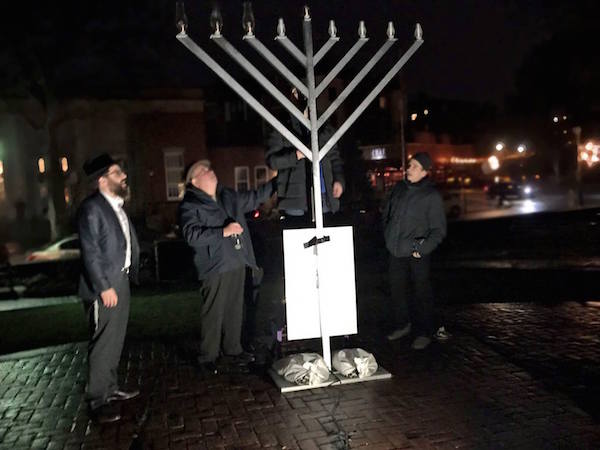 At Tuesday's Scarsdale Board of Trustees meeting, Mayor Dan Hochvert addressed the recent resignations of members of the Committee of Historic Preservation (CHP), and clarified the board's position on notable reversals of CHP decisions. "Deciding which houses meet the criteria in the village code regarding historic preservation is sometimes a very difficult job. Houses that do not meet the criteria but for which their owners have an offer conditioned on demolition bring public benefit of preservation into potential conflict with private property rights."
At Tuesday's Scarsdale Board of Trustees meeting, Mayor Dan Hochvert addressed the recent resignations of members of the Committee of Historic Preservation (CHP), and clarified the board's position on notable reversals of CHP decisions. "Deciding which houses meet the criteria in the village code regarding historic preservation is sometimes a very difficult job. Houses that do not meet the criteria but for which their owners have an offer conditioned on demolition bring public benefit of preservation into potential conflict with private property rights."
In the recent case of 12 Dolma Road, the BOT approved a "hardship" application 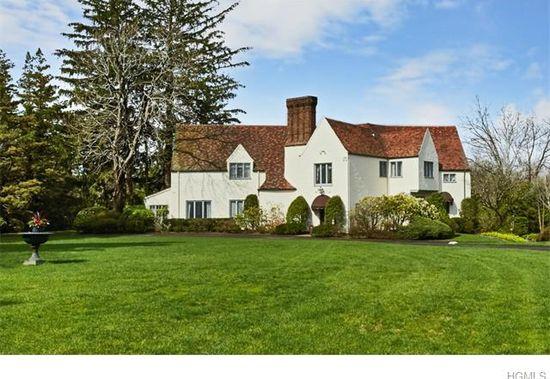 to demolish the home, despite the CHP's decision to preserve it. According to Hochvert, "It is one thing to designate a property as historic and entirely different to determine hardship." The owner had requested a review based on four hardship criteria listed in the village code, and because those standards were met, the board unanimously agreed to overturn the CHP decision.
to demolish the home, despite the CHP's decision to preserve it. According to Hochvert, "It is one thing to designate a property as historic and entirely different to determine hardship." The owner had requested a review based on four hardship criteria listed in the village code, and because those standards were met, the board unanimously agreed to overturn the CHP decision.
The mayor also discussed 24 Morris Lane and 26 Cooper Road, both of which generated split votes from the CHP. With regard to 24 Morris, the CHP voted 3-2 to grant a certificate of appropriateness. However, because four votes are needed to support any decision, village code required that the BOT make the ruling. "The board carefully reviewed the record and agreed with the majority... a majority of CHP members who were at the meeting recommended that the board grant the certificate of appropriateness." In the case of 26 Cooper, Mayor Hochvert said that, while it was known that a renowned architect designed the garage, there was no defendable evidence that he also designed the home. "That evidence was not found by the CHP. The village board also asked expert opinion. The conclusion reached...was that there was no direct evidence the house was designed by him."
Further explaining the board's role, the mayor stated that the community should understand that before designating a home as historic, there must be enough evidence to support the decision. "When the evidence falls short of substantial, the village board is compelled to deny the designation of a property as historic," he said.
The mayor's comments clearly highlighted a need to review the current code to better reconcile the rights of property owners and the value of historic preservation. He acknowledged that there may be future changes that might be appropriate, and recommended that the board and staff be willing to "brainstorm" options to strike the right balance. "The overarching issue the village board faces is how best to preserve historic homes without creating financial hardship for property owners," he stated.
Additional Mayor's Comments:
Also included in Mayor Hochvert's remarks were a reminder for residents to complete the Scarsdale Forum's traffic survey by November 30 if they hadn't already, and praise for last week's interfaith Thanksgiving service. The mayor concluded his comments by recognizing Scarsdale Superintendent of Public Works Benedict (Benny) Salanditro for being named the Public Works Official of the Year by the American Public Works Association New York Metro Chapter.
Manager's Comments:
The village has completed the fieldwork portion of its $700,000 sanitary sewer evaluation, which covered the Mamaroneck Valley sewer district (one of three covering Scarsdale). The study, which involved installation of sewer inspections and cleaning, television monitoring and the installation of flow meters, was to determine the origin of sewer flows and a report on the findings currently is being drafted. One goal of the study is to identify illicit sewer connections from specific properties to eliminate unnecessary water from entering the system. Westchester county regulations provide for 150 gallons/day per person, and Scarsdale exceeds that amount.
Fire Commissioner:
The board voted to extend Fire Captain Daniel Purcell's service time for one year.
Municipal Services:
The board voted to extend the Ad Hoc Committee on Communications service for one year. As the committee has completed its mandate over the past year, it now is charged with 1) working with staff to maintain and increase resident subscription rates to "Notify Me," the village's online notification system; 2) updating the new resident packet and develop a version for electronic distribution, 3) developing resident boards and councils recruitment materials as well as new member packets; 4) collaborating with staff to update and standardize department handouts and forms, 5) reviewing and suggest online department overviews; and, 6) sharing ideas and suggestions for continued enhancements to scarsdale.com.
The board also voted to approve resolutions to place a crèche in Boniface Circle and two Menorahs in Chase Park.














